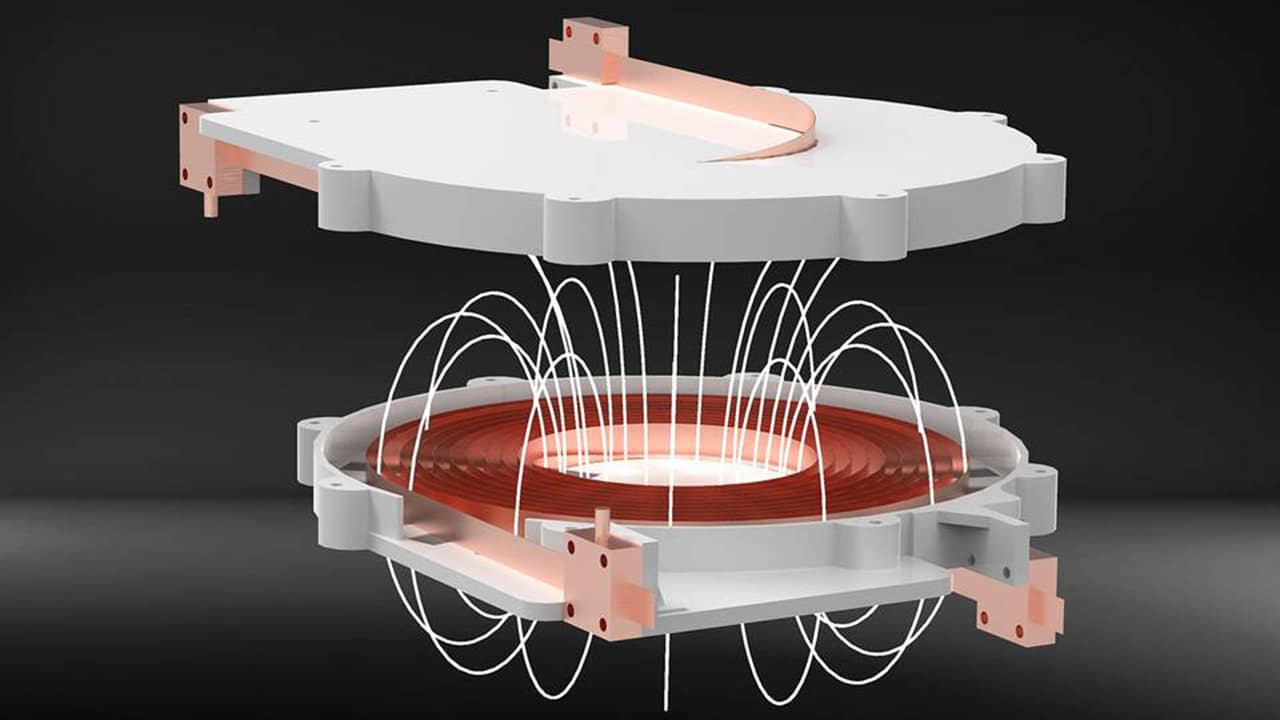
Best in class wireless power transfer (WPT) systems are known to show efficiencies well above 90% when worked in the resonantly coupled mid-range regime.
Such contactless power transmission has already established itself as a key technology for charging small devices such as mobile telephones and electric toothbrushes. Users would like to see contactless charging made accessible for larger electric machines like industrial robots, medical equipment, and electric vehicles.
However, the currently available transmission systems for high-performance recharging in the kilowatt range and above are large and heavy since they are based on copper coils.
In collaboration with the companies Würth Elektronik eiSos and superconductor coating specialist Theva Dünnschichttechnik, physicists at Technical University of Munich (TUM) have successfully made a coil with superconducting wires capable of transmitting power in the range of more than five kilowatts contactless and with only minor losses. The wide field of conceivable applications includes autonomous industrial robots, medical equipment, vehicles, and even aircraft.
Christoph Utschick, a physicist at Technical University of Munich (TUM), who lead the study, said, “We developed a special coil design in which the individual windings of the coil are separated from one another by spacers. This trick significantly reduces alternating current loss in the coil. As a result, power transmission as high as the kilowatt range is possible.”
“The team chose a coil diameter for their prototype that resulted in a higher power density than is possible in commercially available systems. The basic idea with superconducting coils is to achieve the lowest possible alternating current resistance within the smallest possible winding space and thus to compensate for the reduced geometric coupling.”
Physicists chose the coil diameter that resulted in a higher power density than possible commercially available systems. They aim to achieve the lowest possible alternating current resistance within the smallest possible winding space and compensate for the reduced geometric coupling. It called on researchers to resolve a fundamental conflict. If they made the small distance between the superconducting coil’s windings, the coil would be very compact. Still, there would be a danger of superconduction collapse during operation. Larger separations would, on the other hand, result in lower power density.
Utschick said, “We optimized the distance between the individual windings using analytical and numerical simulations. The separation is approximately equal to half the width of the tape conductor.”
Scientists now want to work on further increasing the amount of transmittable power.
If they succeed, it will pave the way towards many fascinating application areas, such as industrial robotics, autonomous transport vehicles, and high-tech medical equipment.
Utschick said, “Wide-scale applicability of the system still faces an obstacle, however. The coils require constant cooling with liquid nitrogen, and the cooling vessels used cannot be made of metal. The walls of metal vessels would otherwise heat up considerably in the magnetic field, much as a pot does on an induction stove.”
Rudolf Gross, Professor for Technical Physics at the Technical University of Munich, said, “There is as yet no cryostat like this which is commercially available. This will mean an extensive amount of further development effort. But the achievements up to now represent major progress for contactless power transmission at high power levels.”
Journal Reference:
- C. Utschick et al. “Superconducting Wireless Power Transfer Beyond 5 kW at High Power Density for Industrial Applications and Fast Battery Charging,” in IEEE Transactions on Applied Superconductivity, vol. 31, no. 3, pp. 1-10, April 2021, Art no. 5500110, DOI: 10.1109/TASC.2021.3056195.
Continue reading Contactless high-performance power transmission in the kilowatt range on Tech Explorist.
0 comments:
Post a Comment